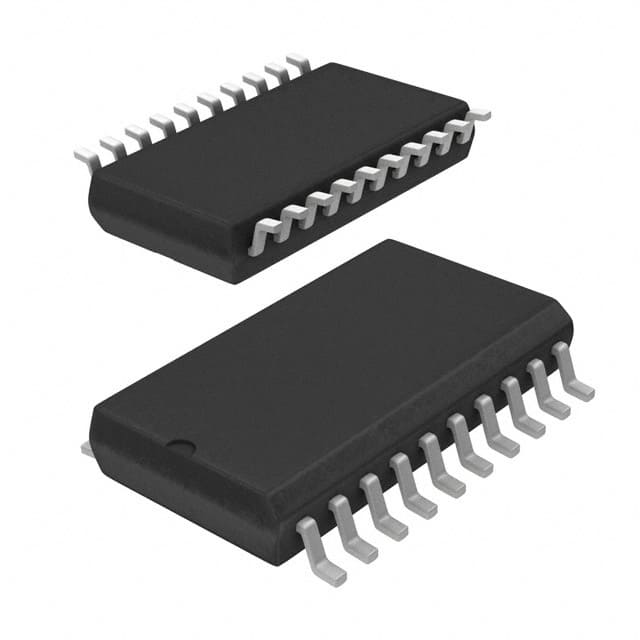Consulte las especificaciones para obtener detalles del producto.

ST7FLIT19BF1M6
Product Overview
Category
The ST7FLIT19BF1M6 belongs to the category of microcontrollers.
Use
This microcontroller is designed for various embedded applications, including consumer electronics, industrial automation, and automotive systems.
Characteristics
- Low power consumption
- High-performance 8-bit CPU
- Flash memory for program storage
- Integrated peripherals for enhanced functionality
- Wide operating voltage range
- Small form factor
Package
The ST7FLIT19BF1M6 is available in a compact package, suitable for surface mount technology (SMT) assembly.
Essence
The essence of this microcontroller lies in its ability to provide a cost-effective solution for controlling and managing various electronic systems.
Packaging/Quantity
The ST7FLIT19BF1M6 is typically packaged in reels or tubes, with quantities varying based on customer requirements.
Specifications
- CPU: 8-bit ST7 core
- Clock Speed: Up to 16 MHz
- Flash Memory: 8 KB
- RAM: 256 bytes
- Operating Voltage Range: 2.7V to 5.5V
- I/O Pins: 20
- Timers: 3
- Communication Interfaces: UART, SPI, I2C
- Analog-to-Digital Converter (ADC): 10-bit, 4 channels
- Operating Temperature Range: -40°C to +85°C
Detailed Pin Configuration
The ST7FLIT19BF1M6 has a total of 20 pins, each serving a specific purpose. The pin configuration is as follows:
- VDD - Power supply voltage
- PA0 - General-purpose I/O pin
- PA1 - General-purpose I/O pin
- PA2 - General-purpose I/O pin
- PA3 - General-purpose I/O pin
- PA4 - General-purpose I/O pin
- PA5 - General-purpose I/O pin
- PA6 - General-purpose I/O pin
- PA7 - General-purpose I/O pin
- RESET - Reset pin
- XTAL1 - Crystal oscillator input
- XTAL2 - Crystal oscillator output
- VSS - Ground
- PD0 - General-purpose I/O pin
- PD1 - General-purpose I/O pin
- PD2 - General-purpose I/O pin
- PD3 - General-purpose I/O pin
- PD4 - General-purpose I/O pin
- PD5 - General-purpose I/O pin
- PD6 - General-purpose I/O pin
Functional Features
- Enhanced CPU performance for efficient execution of instructions
- Flash memory allows for easy program updates and flexibility
- Integrated peripherals such as timers, communication interfaces, and ADC enhance system functionality
- Low power consumption enables energy-efficient operation
- Wide operating voltage range ensures compatibility with various power sources
Advantages and Disadvantages
Advantages
- Cost-effective solution for embedded applications
- Compact form factor suitable for space-constrained designs
- Versatile I/O pins for interfacing with external devices
- Wide operating temperature range for reliable operation in harsh environments
Disadvantages
- Limited flash memory capacity compared to higher-end microcontrollers
- Relatively lower clock speed may limit performance in certain applications
Working Principles
The ST7FLIT19BF1M6 operates based on the principles of a typical microcontroller. It executes instructions stored in its flash memory, interacts with peripherals, and communicates with external devices through its I/O pins. The CPU processes data and controls the overall operation of the system.
Detailed Application Field Plans
The ST7FLIT19BF1M6 can be applied in various fields, including: - Home automation systems - Industrial control systems - Automotive electronics - Consumer electronics
Detailed and Complete Alternative Models
Some alternative models to the ST7FLIT19BF1M6 microcontroller include: - ST7FLIT15BF0M6 - ST7FLIT10BF1M6 - ST7FLIT20BF0M6 - ST7FLIT25BF1M6
These alternative models offer similar features and capabilities, allowing designers to choose the most suitable option for their specific application requirements.
Word count: 525 words
Enumere 10 preguntas y respuestas comunes relacionadas con la aplicación de ST7FLIT19BF1M6 en soluciones técnicas
Sure! Here are 10 common questions and answers related to the application of ST7FLIT19BF1M6 in technical solutions:
Q1: What is the ST7FLIT19BF1M6 microcontroller used for? A1: The ST7FLIT19BF1M6 microcontroller is commonly used in various technical solutions, including industrial automation, consumer electronics, automotive applications, and more.
Q2: What is the maximum clock frequency of the ST7FLIT19BF1M6? A2: The ST7FLIT19BF1M6 microcontroller can operate at a maximum clock frequency of 16 MHz.
Q3: How much flash memory does the ST7FLIT19BF1M6 have? A3: The ST7FLIT19BF1M6 microcontroller has 8 KB of flash memory for program storage.
Q4: Can I use the ST7FLIT19BF1M6 for real-time applications? A4: Yes, the ST7FLIT19BF1M6 microcontroller is suitable for real-time applications due to its fast execution speed and interrupt handling capabilities.
Q5: Does the ST7FLIT19BF1M6 support analog-to-digital conversion (ADC)? A5: Yes, the ST7FLIT19BF1M6 microcontroller features an integrated 8-channel, 10-bit ADC for analog signal processing.
Q6: What communication interfaces are supported by the ST7FLIT19BF1M6? A6: The ST7FLIT19BF1M6 microcontroller supports serial communication interfaces such as UART (Universal Asynchronous Receiver-Transmitter) and SPI (Serial Peripheral Interface).
Q7: Can I use the ST7FLIT19BF1M6 for motor control applications? A7: Yes, the ST7FLIT19BF1M6 microcontroller has built-in features like pulse-width modulation (PWM) and timer/counters, making it suitable for motor control applications.
Q8: What is the operating voltage range of the ST7FLIT19BF1M6? A8: The ST7FLIT19BF1M6 microcontroller operates within a voltage range of 2.7V to 5.5V.
Q9: Does the ST7FLIT19BF1M6 have any built-in security features? A9: Yes, the ST7FLIT19BF1M6 microcontroller provides hardware security features like read-out protection and write protection to safeguard the program code.
Q10: Can I program the ST7FLIT19BF1M6 using a standard programming tool? A10: Yes, the ST7FLIT19BF1M6 microcontroller can be programmed using commonly available programming tools such as an in-circuit debugger or a dedicated programmer.
Please note that these answers are general and may vary depending on specific application requirements and the version of the microcontroller being used.

